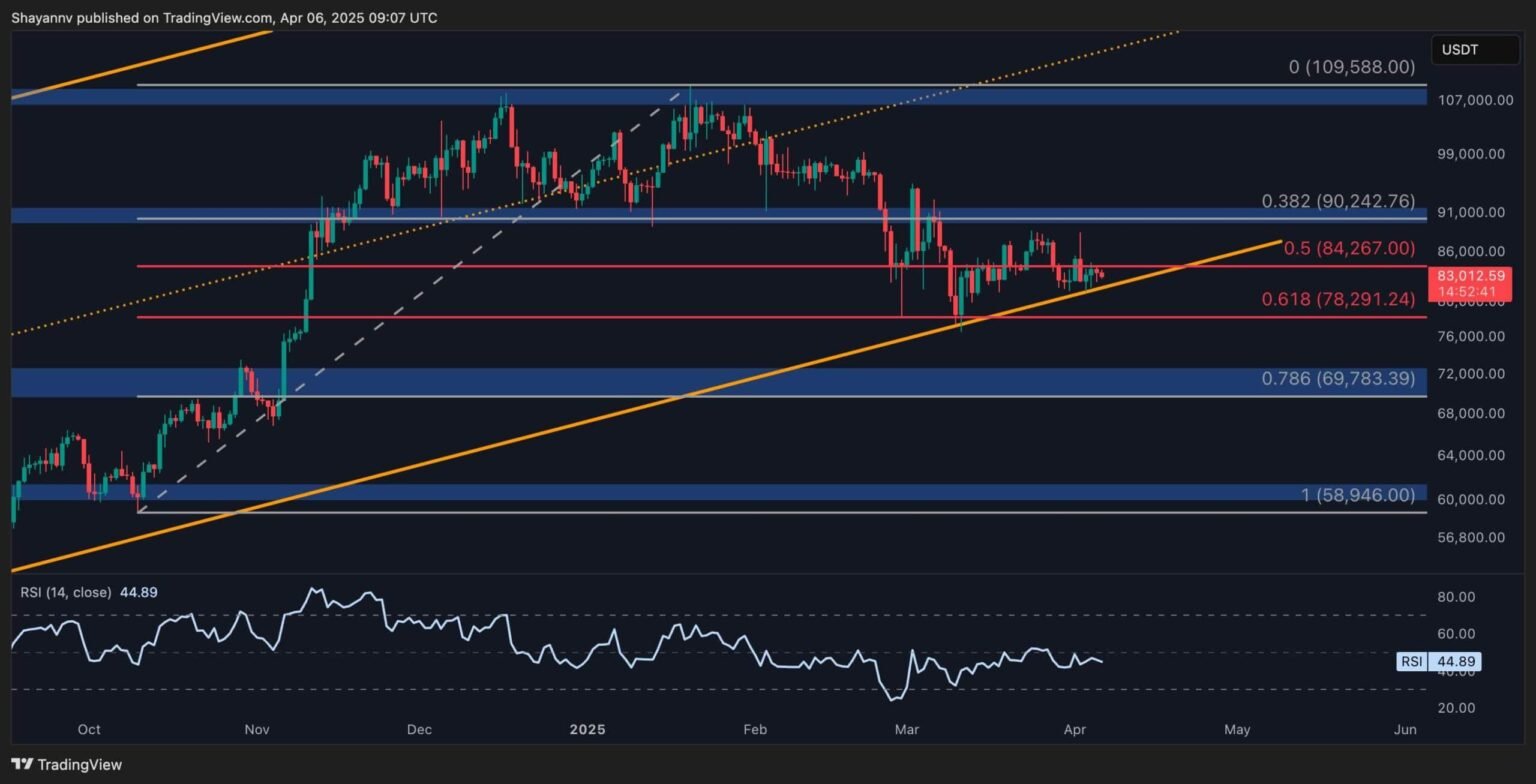Bitcoin has been consolidating above the crucial $80K support level, going through substantial uncertainty. However, this range is expected to hold, potentially leading to a bullish reversal.
Technical Analysis
By Shayan
The Daily Chart
Bitcoin has been moving sideways above the $80K key support zone, which includes the 0.5-0.618 Fibonacci retracement levels and the ascending channel’s lower boundary. This area is a critical psychological and technical support, likely filled with buying interest.
However, if sellers gain control and push the price below, a wave of long liquidations could trigger substantial declines. The next major trend will depend on Bitcoin’s price action around the $80K zone.
The 4-Hour Chart
On the lower timeframe, Bitcoin faced selling pressure at the upper boundary of its descending channel, resulting in a sharp rejection. The price is now testing short-term support at $83K, aligning with a previous swing low. While some buying interest may emerge, overall market momentum remains weak, with sellers still in control.
If buyers fail to defend this level, a drop toward the channel’s mid-boundary at $79K will become likely. Conversely, a breakout above the descending channel’s upper trendline could trigger a rally toward $93K.
On-chain Analysis
By Shayan
This chart illustrates the Miners’ Position Index (MPI), a key metric that measures the ratio of total miner outflow to its one-year moving average. Elevated MPI values indicate heightened selling pressure from miners, which can signal potential price declines.
Currently, the MPI remains below zero, suggesting no significant miner-driven selling pressure. Although the total number of Bitcoins held by miners continues to decline gradually, the USD value of their holdings has been trending steadily upward.
This trend implies that miners remain confident in their operations. While their BTC reserves are shrinking, their USD-denominated value is increasing, reducing the incentive for mass liquidations even amid market downturns. This behavior suggests that the ongoing correction is more likely a deep consolidation phase rather than the start of a bear market.
Read the full article here
